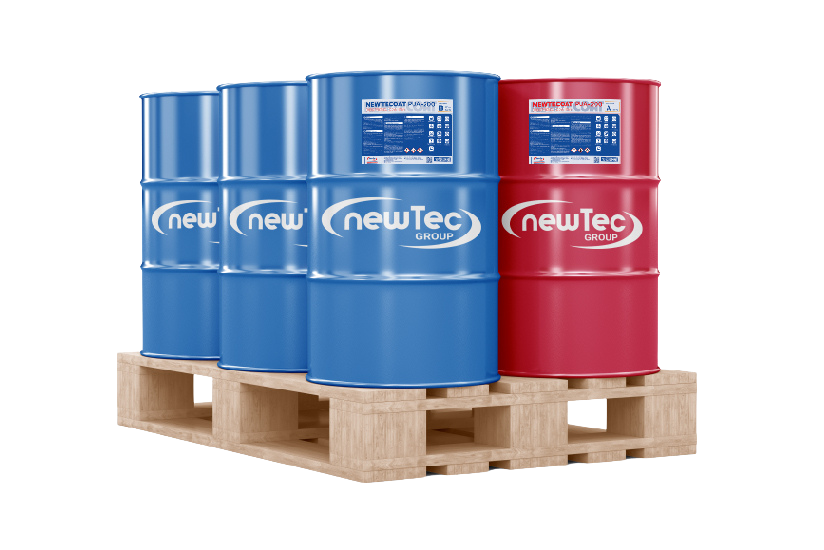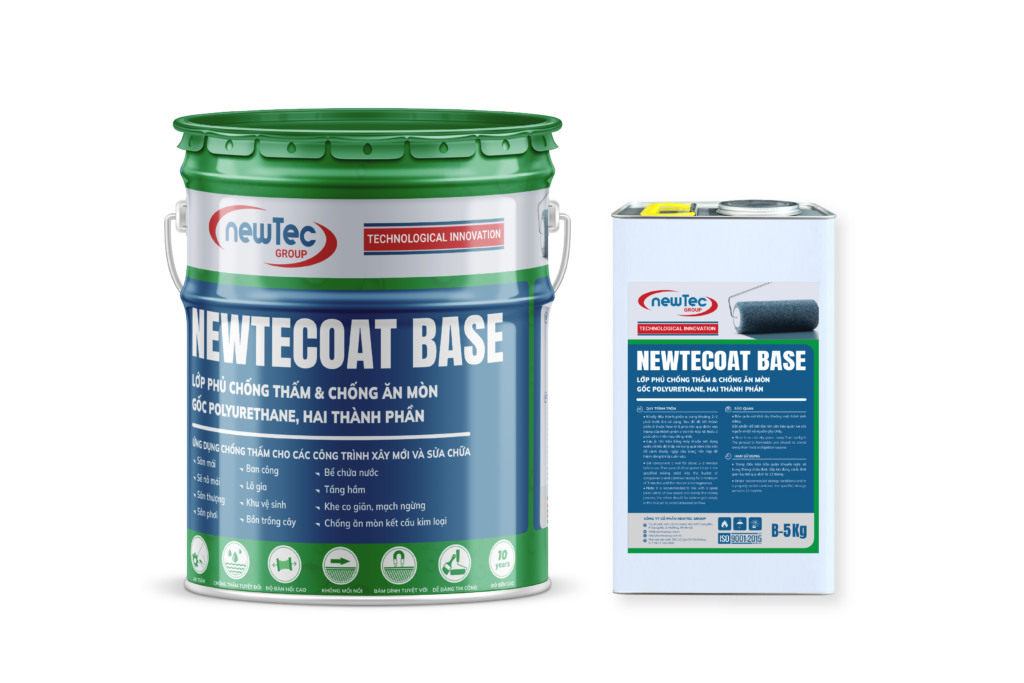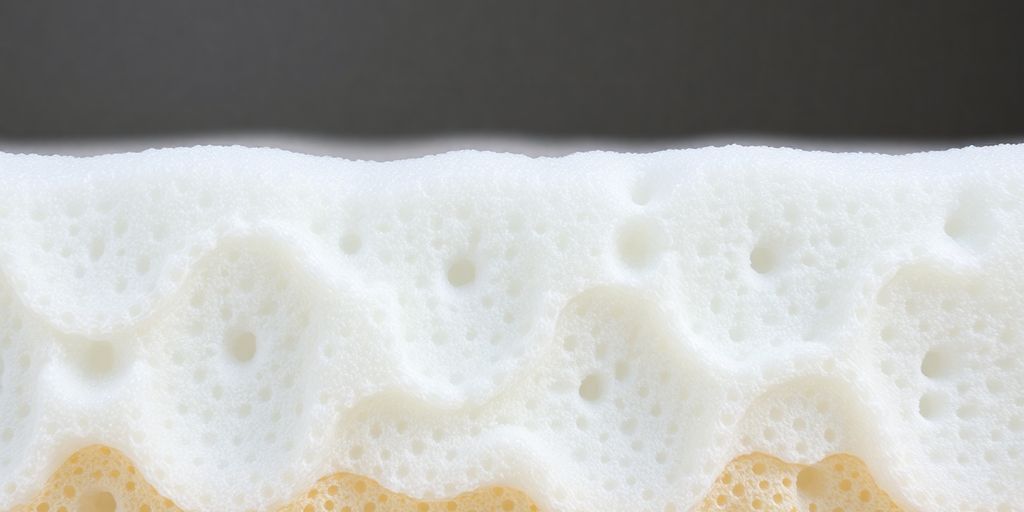Polyurethane foam is everywhere, from the cushions on your couch to the insulation on your walls. But have you ever stopped to think about what is polyurethane foam made of? This article breaks down the key ingredients and processes that go into creating this versatile material. We’ll cover the basics of its composition, the manufacturing process, and the various types of polyurethane foam, along with their applications and environmental impacts. Let’s get started!
Key Takeaways
- Polyurethane foam is primarily made from polyols and diisocyanates, which react chemically to form the foam.
- Additives play a significant role in enhancing the properties of polyurethane foam, such as flexibility, durability, and fire resistance.
- The manufacturing process involves mixing raw materials, foaming, and curing to create the final product.
- There are different types of polyurethane foam, including flexible, rigid, and specialty foams, each designed for specific uses.
- Environmental concerns include challenges with biodegradability and recycling, prompting the search for sustainable alternatives.
The Basics of Polyurethane Foam Composition
Understanding Polyols and Diisocyanates
Okay, so polyurethane foam might seem like just…foam. But there’s some interesting chemistry going on. The basic idea is that it’s made by reacting polyols and diisocyanates. These two things are the main players. Think of them as the base ingredients. The cool thing is that by tweaking these ingredients, you can get foam with totally different properties. Want something squishy? Change the polyols. Need something super rigid? Mess with the diisocyanates. It’s like baking, but with more science.
The Role of Additives in Foam Production
It’s not just polyols and diisocyanates doing all the work. Additives play a big part too. These are things like catalysts, blowing agents, flame retardants, and even fillers.
Here’s a quick rundown:
- Catalysts: Speed up the reaction between the polyols and diisocyanates.
- Blowing Agents: Create the bubbles that make the foam, well, foamy.
- Flame Retardants: Help the foam resist catching fire (pretty important!).
- Fillers: Can change the density or other properties of the foam. For example, you can use polyether polyols to create flexible foams.
The Importance of Chemical Reactions
So, you mix the polyols, diisocyanates, and additives. What happens next? A chemical reaction, of course! This reaction is what turns the liquid mixture into a solid foam. It’s called polymerization, and it means that the molecules of the ingredients link together to form long chains. These chains create a network that gives the foam its structure. The type of reaction and how it’s controlled determines the final properties of the foam. Temperature, mixing speed, and the order in which you add things all matter. It’s a delicate process, but when it works, you get that foam we all know and…sometimes love.
Key Ingredients in Polyurethane Foam
Polyols: The Building Blocks
Polyols are really important. They’re like the foundation upon which polyurethane foam is built. Think of them as alcohols with multiple reactive hydroxyl groups. The type of polyol used greatly affects the final foam’s properties, like its flexibility, density, and resistance to wear and tear. There are a few main types:
- Polyether polyols: These are common and give the foam good flexibility and resistance to water.
- Polyester polyols: These offer better resistance to chemicals and solvents, making them good for tougher applications.
- Acrylic polyols: These are used when you need good weather resistance and color retention.
Choosing the right polyol is a big deal. It’s not just about picking one at random; it’s about matching the polyol’s characteristics to what you need the final foam to do. Get it wrong, and you might end up with foam that’s too stiff, too soft, or just doesn’t last.
Diisocyanates: The Reactive Component
Diisocyanates are the other half of the equation. They react with the polyols to form the polyurethane polymer. The most common one you’ll hear about is TDI (toluene diisocyanate), but MDI (methylene diphenyl diisocyanate) is also used a lot, especially when you need something less volatile. The reaction between the polyols and diisocyanates is what creates the urethane linkage, which is what gives polyurethane its name and its unique properties. The ratio of diisocyanate to polyol is super important because it affects the foam’s structure and how it performs. Too much or too little diisocyanate can mess up the whole process, leading to a foam that doesn’t cure properly or has unwanted characteristics.

Diisocyanates: The Reactive Component
Additives: Enhancing Foam Properties
It’s not just about the polyols and diisocyanates; additives play a big role too. These are the things that give the foam special characteristics. Here’s a quick rundown:
- Blowing Agents: These create the foam structure. Water is a common one, reacting with the isocyanate to produce carbon dioxide, which makes the foam expand. Other chemical blowing agents can be used too, depending on the desired foam density and properties.
- Catalysts: These speed up the reaction between the polyols and diisocyanates. Different catalysts can be used to control the reaction rate and the foam’s final properties.
- Surfactants: These help stabilize the foam as it forms, preventing it from collapsing. They also affect the cell size and structure of the foam.
- Flame Retardants: These are added to make the foam less flammable, which is important for safety in many applications.
- Fillers: These can be added to reduce cost, increase density, or improve certain properties like load-bearing capacity.
The Manufacturing Process of Polyurethane Foam
Mixing Raw Materials
The first step in making polyurethane foam is all about getting the recipe right. It starts with carefully measuring and mixing the raw ingredients. Think of it like baking, but instead of flour and sugar, we’re using chemicals. The main ingredients are polyols and diisocyanates, plus water, catalysts, surfactants, and sometimes flame retardants. These are combined in big tanks to create a liquid mixture ready for the next stage.
Foaming Process Explained
This is where the magic happens! The liquid mixture is poured onto a moving conveyor belt, often inside a paper mold. A chemical reaction kicks off, causing the mixture to foam and expand. Carbon dioxide, produced by the reaction of isocyanate and water, acts as the primary blowing agent. For softer foams, extra blowing agents might be added. The type and amount of ingredients determine the foam’s density and properties. It’s a continuous process, resulting in a long block of foam.
Curing and Shaping the Foam
Once the foam has expanded, it needs to be cured. This usually involves letting it sit for about a day to cool and fully react. After curing, the large block of foam is cut into different shapes and sizes, depending on its intended use. This could be anything from sheets for mattresses to custom shapes for furniture. The foam manufacturing process is pretty cool, right?
The manufacturing of polyurethane foam is a carefully controlled process. The precise ratios of chemicals, mixing techniques, and curing conditions are all critical to achieving the desired foam properties. Any slight variation can affect the final product’s density, firmness, and durability.
Here’s a simplified view of the process:
| Step | Description |
|---|---|
| 1. Mixing | Combine polyols, diisocyanates, water, and additives. |
| 2. Foaming | Mixture expands due to chemical reaction, forming foam. |
| 3. Curing | Foam solidifies and stabilizes. |
| 4. Shaping | Foam is cut into desired shapes and sizes. |
Types of Polyurethane Foam
Polyurethane foam is incredibly versatile, and that means there are a bunch of different types out there, each designed for specific uses. It’s not just one-size-fits-all! Let’s break down the main categories.
Flexible Foam for Comfort
Flexible polyurethane foam is what most people think of when they picture foam. It’s soft, squishy, and great for cushioning. Think about your couch cushions, mattresses, and even car seats. This type of foam comes in a range of densities, from super soft to quite firm, so you can get just the right level of support and comfort. It’s made using polyether polyols, toluene di isocyanate, and other additives. Flexible foam is made by mixing raw materials like polyol, isocyanate, blowing agents, catalyst,s and surfactants are metered continuously into a mixer. The mixed reactants are poured continuously into a paper mold which moves on a conveyor belt. In the paper mold the mixed liquid foams and expands to form a continuous block of foam. This block is cut and stored for one day to cure the foam and cool it. The cured block cuttings are then cut into a variety of shapes. These foams have having density in the range of 15 to 50Kg/m3.
- Upholstery
- Mattresses
- Automotive seating
Flexible foam is all about providing comfort and support where it’s needed most. It’s the go-to choice when you want something soft and forgiving.
Rigid Foam for Insulation
On the other end of the spectrum, we have rigid polyurethane foam. This stuff is tough! It’s designed for insulation and structural support, not for sinking into. You’ll find it in walls, roofs, and refrigerators. Thermal insulation is a key feature. Rigid foam has a closed-cell structure, which means it traps air (or other gases) inside the cells, making it a super effective insulator. It’s also lightweight and strong, so it can add structural integrity to whatever it’s used in.
- Construction insulation
- Refrigeration
- Packaging
Specialty Foams for Unique Applications
Beyond the standard flexible and rigid foams, there’s a whole world of specialty polyurethane foams designed for specific jobs. These foams might have unique properties like being extra resistant to chemicals, having a very fine cell structure, or even being able to change shape when heated. For example, memory foam is a type of specialty foam that’s used in mattresses and pillows because it conforms to your body shape. Self-skinning foam is a flexible polyurethane foam with a dense outer skin layer that provides durability, abrasion resistance, and a smooth surface. Microcellular foam has a fine cell structure that provides enhanced mechanical properties such as improved resistance to compression set and higher load-bearing capacity. Polyurethane elastomers are also in this category. These are highly elastic materials used in applications requiring flexibility, resilience, and abrasion resistance.
Here are a few examples:
- Memory Foam: Conforms to shape, used in mattresses and pillows.
- Self-Skinning Foam: Durable outer layer, used in automotive interiors.
- Acoustic Foam: Absorbs sound, used in recording studios.
Applications of Polyurethane Foam
Upholstery and Furniture
Polyurethane foam is a staple in the furniture industry. Its ability to provide comfort and support makes it ideal for cushions, mattresses, and upholstery. You’ll find it in everything from your living room sofa to the chair you’re sitting on right now. The flexibility of the foam allows it to be molded into various shapes and densities, catering to different comfort levels and design requirements. It’s pretty amazing how much of our furniture relies on this stuff.

Polyurethane foam is a staple in the furniture industry
Automotive Uses
Polyurethane plays a significant role in the automotive industry, contributing to both comfort and safety. Car seats, headrests, and interior padding all benefit from the cushioning properties of polyurethane foam. Beyond comfort, it’s also used in structural components, sound insulation, and even some exterior parts. The durability and resistance to wear and tear make it a great choice for automotive applications. It’s kind of wild to think about how much of your car is actually foam!

Polyurethane plays a significant role in the automotive industry
Insulation and Construction
In the construction world, polyurethane foam is a go-to material for insulation. Its closed-cell structure provides excellent thermal resistance, helping to keep buildings warm in the winter and cool in the summer. This translates to lower energy bills and a more comfortable living environment. It’s used in walls, roofs, and even foundations. Plus, it helps with soundproofing, which is a nice bonus. You can find durable coatings made of polyurethane used for protection.
Polyurethane foam’s versatility extends beyond just insulation. It’s also used in structural applications, providing support and stability to buildings. Its lightweight nature makes it easy to handle and install, reducing construction time and labor costs. The resistance to moisture and mold growth further enhances its appeal as a building material.
Environmental Considerations of Polyurethane Foam
Biodegradability Challenges
Polyurethane foam presents some serious problems when it comes to breaking down naturally. Unlike materials that decompose relatively quickly, polyurethane can stick around in the environment for a very long time. This is because its chemical structure is designed for durability and resistance to degradation, which, while great for product lifespan, isn’t so great for the planet. The lack of easy biodegradability means that polyurethane waste accumulates in landfills, contributing to space issues and potential soil contamination. It’s a bit of a headache.
Recycling Polyurethane Foam
Recycling polyurethane foam is possible, but it’s not as straightforward as recycling plastics or paper. Here’s the deal:
- Collection and Sorting: Getting enough used foam together and sorting it by type is tough. Different foams have different chemical makeups, which affects how they can be recycled.
- Reprocessing Methods: There are a few ways to recycle it, like grinding it up and using it as filler in new products, or breaking it down chemically to make new materials. But these methods can be expensive and complex.
- Limited Infrastructure: Not every area has the facilities to recycle polyurethane foam, which means a lot of it ends up in the trash even if people want to recycle it.
Finding ways to improve recycling processes and make them more accessible is key to reducing the environmental impact of polyurethane foam. It’s not a perfect solution right now, but progress is being made.
Sustainable Alternatives
As people become more aware of the environmental problems with polyurethane, there’s growing interest in finding better options. Some alternatives include:
- Bio-based Foams: These foams are made from renewable resources like plant oils, which can reduce our dependence on fossil fuels. They aren’t perfect, but they’re a step in the right direction.
- Recycled Content Foams: Some manufacturers are using recycled materials to make foam, which helps reduce waste and conserve resources. It’s a win-win.
- Natural Latex Foam: Made from rubber tree sap, natural latex foam is a more sustainable option than traditional polyurethane. It’s biodegradable and doesn’t release harmful chemicals. Plus, it’s comfy! The environmental impact is lower.
Historical Development of Polyurethane Foam
Origins of Polyurethane
Polyurethane’s story starts in 1937, thanks to Dr. Otto Bayer and his team at IG Farben in Germany. They were looking for new polymers and stumbled upon the reaction between polyols and diisocyanates. This discovery was a big deal because it opened the door to a whole new class of materials. IG Farben saw the potential early on, but commercial production didn’t take off until the 1950s. It’s interesting to think that something we use so much today has roots that go back to that era. The polyurethane market has grown significantly since then.
Evolution of Foam Technology
From those early experiments, polyurethane foam has come a long way. Initially, the focus was on creating a material that could replace rubber, which was in short supply. Over time, scientists and engineers tweaked the formulas and processes to create foams with different properties. We went from basic, somewhat limited foams to flexible foams for furniture, rigid foams for insulation, and even specialty foams with unique characteristics. The development of blowing agents, catalysts, and other additives played a huge role in this evolution. These advancements allowed for better control over the foam’s density, texture, and performance. It’s a testament to how much innovation can happen when people keep experimenting and pushing boundaries.
Impact on Modern Industries
Polyurethane foam has had a massive impact across many industries. Think about it: from the upholstery and furniture in our homes to the insulation in our walls, it’s everywhere. The automotive industry uses it for seats and dashboards, while the construction industry relies on it for insulation panels. Its versatility, durability, and range of properties have made it a go-to material for countless applications. It’s hard to imagine modern life without it. The ability to tailor polyurethane’s properties to specific needs has made it an indispensable part of many manufacturing processes. It’s a true example of how scientific discovery can transform the way we live and work.
Polyurethane foam’s journey from a lab experiment to a ubiquitous material is a story of innovation and adaptation. Its impact on various industries is undeniable, and its continued evolution promises even more exciting applications in the future.
Wrapping It Up
So, there you have it! Polyurethane foam is made from a mix of polyols and diisocyanates, and it goes through some pretty cool chemical reactions to become the comfy stuff we sit on every day. We’ve seen how this material can be tweaked with different additives to create everything from soft cushions to sturdy insulation. It’s amazing how something so simple can be so versatile. Next time you sink into your couch or lay on a memory foam mattress, you’ll know a bit more about what’s inside. And hey, if you’re ever in the market for new furniture, maybe take a moment to think about the foam inside. It’s more than just fluff!





You may also be interested in
Understanding What Polyurethane Foam When Burned Gives Off: Health Risks and Safety Precautions
Polyurethane foam is commonly used in many products, from furniture to insulation. However, when it
May
Exploring the Question: Is Polyurethane Durable Enough for Everyday Use?
Polyurethane is everywhere, from the cushions on your couch to the insulation in your walls.
May
Exploring the Truth: Is Polyurethane Eco Friendly in Today’s World?
Polyurethane is everywhere these days, from your furniture to your sneakers, but is polyurethane eco
May
Trusted Polyurea Manufacturer for Philippines Supporting Industrial and Construction Excellence
The polyurea market in the Philippines is poised for significant growth from 2025 to 2031,
May
The Role of a Reliable Polyurea Manufacturer for Malaysia in Enhancing Construction Quality
Polyurea coatings have become increasingly vital in Malaysia’s industrial and construction sectors due to their
May
Reliable Polyurea Manufacturer for Cambodia Supporting Industrial and Construction Growth
Polyurea coatings are increasingly recognized for their vital role in the industrial and construction sectors,
May
Meet the Leading Polyurea Manufacturer for Thailand Powering Industrial Applications
Polyurea coatings have become an essential solution in various industrial sectors due to their exceptional durability, rapid curing times, and resistance to
May
Exploring Polyurea Manufacturer & Custom Coating Options in Southeast Asia
Polyurea coatings have become a game-changer in the protective coatings industry due to their remarkable
May